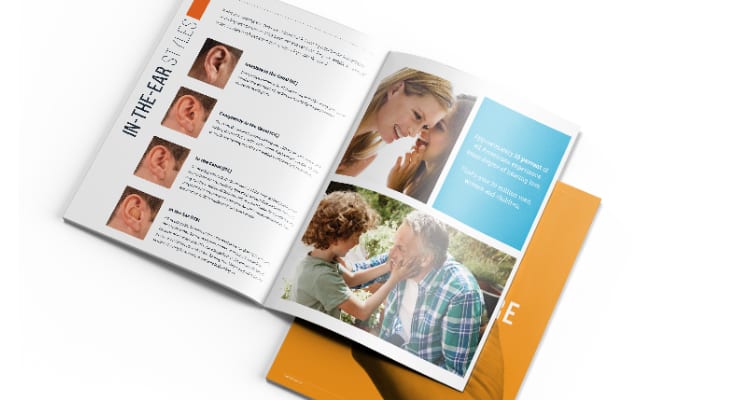Hearing Aid Batteries
Hearing devices require the right batteries to run correctly. When purchasing hearing aids from Better Hearing of Madison County, battery types and needs are explained in full detail. Even if you have the right batteries installed, having a backup prevents any chance of downtime.
Types and sizes
Zinc-air and rechargeable are the two main types of batteries sold for hearing aids. The standard disposable types are easy to identify, and each come with their own color and size code. Lifespan varies between the different types, with the biggest factor being the model of the hearing aid. Current sizes from largest to smallest are 675 (blue), 13 (orange), 312 (brown) and 10 (yellow). Once a zinc-air battery is activated, it has to be used. Careful storage of zinc-air batteries is essential to optimize their long-term usage. By following the care instructions on the package, zinc-air batteries meet or exceed their expected run times.
Rechargeable batteries
Rechargeable batteries have become popular with modern hearing aids due to their ease of use. Instead of recycling old batteries out, users can use a portable charging station to energize the battery. The stations are small and can be placed in any location near an outlet. A traditional hearing aid can’t be converted to use rechargeable batteries. This makes the initial device choice that much more vital. Unlike high energy devices like smartphones, the battery depletion rate of a rechargeable hearing aid battery is much more negligible. By the time the battery has any noticeable loss of performance, it will already be time to replace the original hearing aids.
Care and maintenance
Zinc-air batteries should be stored in a cool and dry place. When properly cared for, they can last up to three years in the original packaging. Stability is important with zinc-air batteries, so any type of puncture or accidental activation will lessen their effectiveness. Storing in extreme temperatures in either direction is not recommended and should be avoided when possible.
For rechargeable batteries, users can follow the same care instructions provided for the hearing device. Since the batteries don’t need to be removed, the overall health of the battery depends on the care of the actual hearing instrument.
Cell Phone Accessories for Hearing Aids
Thanks to modern technology, there are a number of cell phone accessories that work with your hearing aids to provide a more personal and fluid experience. There are several different ways to connect hearing aids to cell phones through the use of Bluetooth technology.
Many cell phones can be used with Bluetooth-enabled devices. Hearing aid accessories that provide a hands-free option may also be helpful.
What is Bluetooth?
Bluetooth technology enables your hearing aids to be connected to a variety of different electronics, like your cell phone. Through a setting on your hearing aid, you can be linked to different technologies around you, which allows you to adjust volume settings personally with your devices.
More about hearing aid compatible (HAC) cell phone accessories
HAC cell phone accessories are beneficial to hearing aid users for several reasons. They put distance between the hearing aid and the cell phone, which can cut down on any buzzing or feedback, as well as decrease any interference between the two devices.
Some HAC accessories can give you hands-free cell phone usage, which is especially important if you plan on using your cell phone while driving. You may also be able to use the speakerphone function on some devices if you use the microphone mode on your hearing aid.
All major cell phone manufacturers are now required to make HAC cell phones available to hearing aid users and many also have HAC cell phone accessories available as well.
It’s a good idea to talk with your cell phone provider to determine if the operating system works with their hearing aids. Additionally, talk with your hearing care provider to determine if Bluetooth can be utilized with your particular phone. Trying the phone with the device will give you a good idea of how well the accessory will work for you.
Keep in mind that some phones and devices may work differently once you leave the store, so it is also a good idea to find out about any money-back or satisfaction guarantees.



